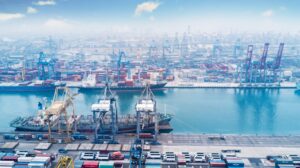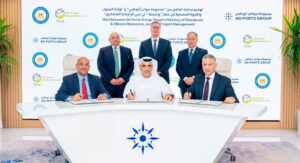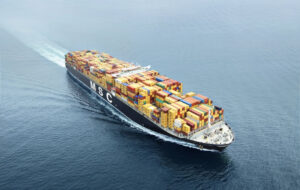Kim Fejfer, CEO of APM Terminals recently presented the Terminal Operators’ keynote address at the 18th Annual Global Liner Shipping Conference, in which he described the challenges facing port operators in today’s volatile market and the future requirements for success.
Kim Fejfer said: “The need for change has been more pronounced in the past two years than in the past 20 years.
“Changes in shipping require not only investment and increased efficiency at the individual port level, but the configuration of port complexes needs to adapt to cope with current trade flows, increased ship sizes and demands for lowest possible costs. There will be clear winners and losers in the coming years.”
Global trade is challenged, with current growth at 2-3%, compared to 10-12% before the 2008 crisis.
The confidence in the global economy has been shaped by lower oil prices, geopolitical uncertainties, the downturn of emerging markets, a sluggish European economy and slow GDP growth of 2%.
This forces the shipping lines to compete on network efficiency and leverage their global alliances to achieve the lowest possible cost. The port industry is experiencing three important trends in this changing environment:
The first is that ultra large vessels are entering the major trade lanes, triggering the cascading of large vessels into smaller trade lanes and all ports must now respond to handle them.
Secondly, liner industry consolidation is reshaping port call selection and frequency – with more changes expected in the structure of alliance members.
Lastly, shipping lines are under extreme cost pressure so they demand lower prices and better efficiency from terminal operators to protect razor thin margins.
Fejfer continues: “We see three trends in our operations: in the past we handled 13,000 TEU vessels. Now we handle vessels 50% larger – and you need to be ready to handle these 20,000 TEU ships in all your ports or watch the business move elsewhere. Trade will always find the most efficient way to flow.
“Secondly in the past, low cost was important. Now, the lowest cost wins the business. Next, we used to see a critical need for both high speed and flexibility. Today, liner operators are so focused on cost they want consistency and reliability.
“In today’s competitive environment, we need to become more standardised across our global portfolios, apply more technology to our terminal processes, use our scale, use more flexibility with our labor and partner with customers to get to the next level of efficiency in the industry. At the individual port complex level, there is a need for a port shakeup.
“At the ports of Los Angeles and Long Beach, there are 15 different container terminals with the various alliances wanting to call on their respective terminals, creating cost and waste in intra-terminal transfers.
“If port operators are to contribute to the efficiency of shipping lines we have to drive rationalisation, consolidation and segmentation to serve the larger vessels and smaller vessels. More investment is needed in port infrastructure.”
On a global level, ocean carriers are consolidating port calls to achieve network efficiency and tailor their networks to bigger import/export gateways and super large hub terminals.
This trend will create winners and losers in the terminal business. Successful ports will offer strategic locations, ideal navigational access and deep water.







